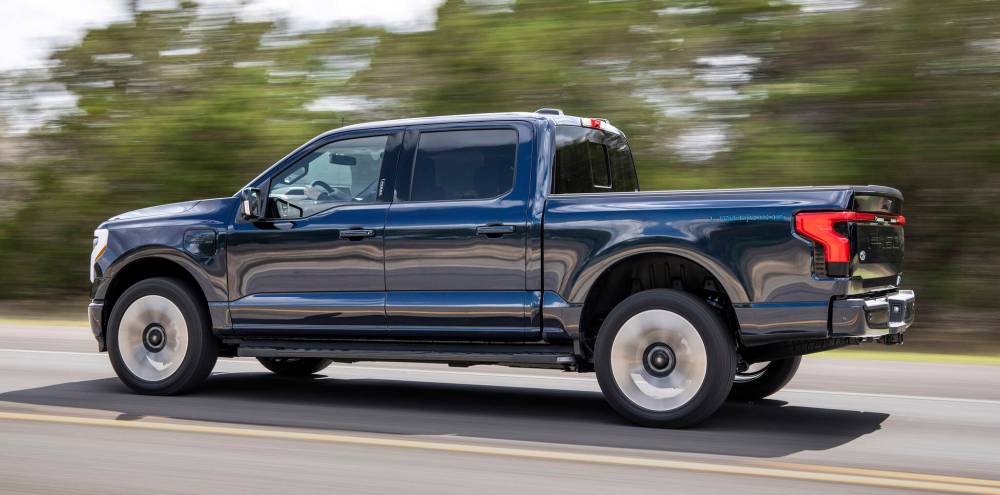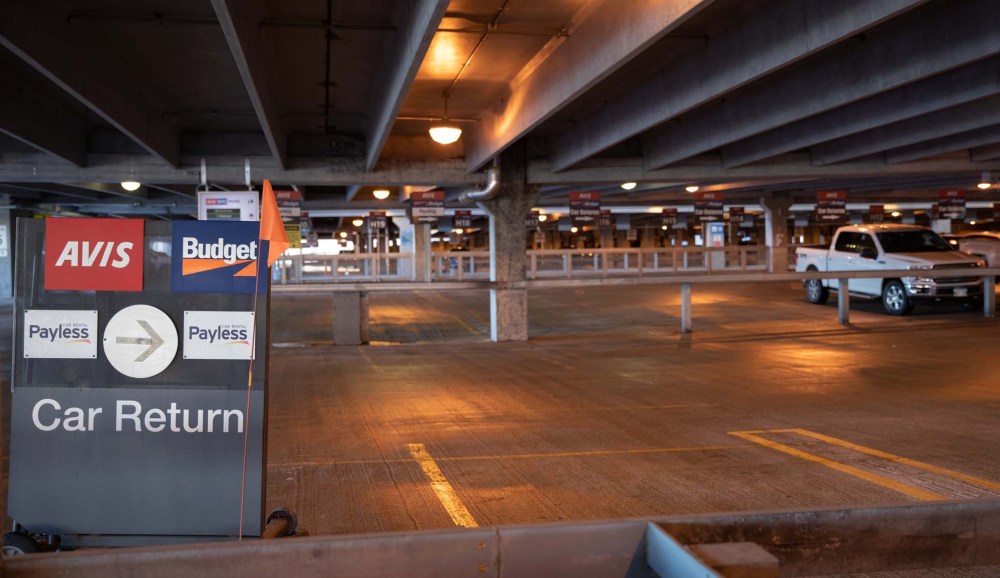Waiting game Inventory improving, but customers who want a new set of wheels still stuck in neutral
Read this article for free:
or
Already have an account? Log in here »
To continue reading, please subscribe:
Monthly Digital Subscription
$0 for the first 4 weeks*
- Enjoy unlimited reading on winnipegfreepress.com
- Read the E-Edition, our digital replica newspaper
- Access News Break, our award-winning app
- Play interactive puzzles
*No charge for 4 weeks then price increases to the regular rate of $19.00 plus GST every four weeks. Offer available to new and qualified returning subscribers only. Cancel any time.
Monthly Digital Subscription
$4.75/week*
- Enjoy unlimited reading on winnipegfreepress.com
- Read the E-Edition, our digital replica newspaper
- Access News Break, our award-winning app
- Play interactive puzzles
*Billed as $19 plus GST every four weeks. Cancel any time.
To continue reading, please subscribe:
Add Free Press access to your Brandon Sun subscription for only an additional
$1 for the first 4 weeks*
*Your next subscription payment will increase by $1.00 and you will be charged $16.99 plus GST for four weeks. After four weeks, your payment will increase to $23.99 plus GST every four weeks.
Read unlimited articles for free today:
or
Already have an account? Log in here »
Hey there, time traveller!
This article was published 17/02/2023 (1027 days ago), so information in it may no longer be current.
Customers who want a pickup truck are in luck, but others still have a long wait for their wheels.
Long gone are the days when a potential buyer just walked into a dealership, found the vehicle of their dreams and drove it off the lot.
The days of abundant supply and blowout deals are likely gone for good, industry experts say.
“It’s rare that we’ll have… a new vehicle that lands at our dealership that is not already sold,” said Cal Sobering, the general manager of Jim Gauthier Kia.
“It’s rare that we’ll have… a new vehicle that lands at our dealership that is not already sold.”–Cal Sobering
On Wednesday, the McPhillips Street lot had a paltry five new vehicles; all had been purchased and were about to be delivered.
Sobering said it would be ideal to have 60 to 70 new autos on the lot at all times. He counted 48 incoming; at least 30 of those were pre-bought.
“Most customers, when they come in, they’ve already done all of their shopping,” Sobering said. “They know exactly what they want.”
A typical wait is three weeks to three months.
“Inventory is getting better,” Sobering said, but it isn’t abnormal for customers who want specific makes, or hybrid or electric vehicles to wait even longer.
“You just have to be prepared to wait,” said Connie Blixhavn.
First, she waited seven months for her electric Mustang Mach-E, which arrived in January 2021.
Next, she waited for her husband’s Ford F-150 Lightning, another electric vehicle. When she spoke to the Free Press late last year, she anticipated the truck would arrive by Christmas.
It came in mid-January, roughly a year after it was ordered.
“We kind of expected that,” Blixhavn said. “We figured when it gets here, it gets here.”
FORD / TNS FILES delivery of a Ford F-150 Lightning Platinum took approximately a year for customer Connie Blixhavn. 
Many customers have accepted they have to wait, Sobering said. He repeatedly explains “there’s only so much of the supply chain we can control.”
Manufacturers are playing production catch-up to meet global demand.
In 2020, auto production dropped 16 per cent, to fewer than 78 million vehicles, the International Organization of Motor Vehicle Manufacturers reported. In 2021, production increased three per cent.
Ford, General Motors and Stellantis (whose brands include Chrysler and Fiat) ramped up production further last year compared to 2021, AutoForecast Solutions reported.
It projects vehicle production to consistently increase over the next decade. However, problems related to the supply chain, including the shortage of semiconductor chips, will continue to hinder output.
Dealership owner Steve Chipman said it’s possible the industry won’t ever reach pre-pandemic capacity.
“I think factories have learned they can make fewer cars, and they don’t have to discount as much,” said the president of the Birchwood Automotive Group.
Pre-pandemic, bargains and incentives were plentiful. Now, they’ve all but disappeared.
“There’d be all these cars,” Chipman said. “We’d have to sell them because the plants are still running, they’re still building… so how do we move them? We have to have a sale.”
RUTH BONNEVILLE / FREE PRESS FILES In total, Birchwood’s 24 dealerships have about half the cars they did in 2019, Steve Chipman said. It’s double last year’s stock, he noted.
In total, Birchwood’s 24 dealerships have about half the cars they did in 2019, Chipman said. It’s double last year’s stock, he noted.
He expects more vehicles will be on the way, but it’ll take a while before the industry gets back to something that resembles normal.
Chipman said some models have come back in full force; Ford F-150s and Chevrolet Silverados, for example.
Manufacturers have been strategic about which vehicles they produce amid the lack of parts and high demand.
Industry experts’ opinions vary on the future of vehicle sales and when stock will become more robust.
“You may not see 300 cars on a lot, but you’re certainly going to see a large number of them, and as many different models (and colours) as possible,” said Geoff Sine, executive director of the Manitoba Motor Dealers Association.
He expects pre-pandemic vehicle availability to resume by mid-2024.
“Manufacturers claim that they’ve learned their lesson, and that we’ll see lower inventory in dealers to prop up prices,” said Sam Fiorani, vice-president of global vehicle forecasting for AutoForecast Solutions.
He predicted inventory will begin to rise this year.
“The inventory levels are still really, really low, historically,” Fiorani said. “We’re just waiting for them to get a reasonable amount.”
In 2017, more than 95 million autos were built globally.
AutoForecast Solutions projects manufacturers will churn out 86 million vehicles this year — a far cry from the 95 million autos produced in 2017.
MIKE DEAL / WINNIPEG FREE PRESS Used car dealers are struggling, said Chad McGill, West Perimeter Auto Centre’s general manager.
Meantime, the cost of borrowing has shot up. The Bank of Canada has steadily increased its key interest rate, which is currently at 4.5 per cent. As a result, used car dealers are struggling, said Chad McGill, West Perimeter Auto Centre’s general manager.
Customers pay an average 8.9 per cent on their loan at West Perimeter, a staff member said. A local Ford dealership said its new car rates range from 3.99 per cent to 6.9 per cent, but rates vary depending on the manufacturer.
“The price between a new and a used (vehicle) isn’t that much anymore,” McGill said.
Add in a higher interest rate on used car loans, compared to new car loans, and the savings often aren’t “what (they) should be,” he said.
“The (vehicles are) sitting there,” McGill said, adding January and February are typically dealers’ slowest months.
There’s more room for negotiation now than a year ago, he said.
Calvin Glowatski has searched for a Honda Civic for his son on Facebook Marketplace for a year.
Glowatski prefers private sales, especially now, as dealerships charge higher prices and customers have to wait longer.
“It’s very hard to find one (online),” Glowatski said. “If you do, generally, it’s going to be rebuilt or something. It’s not going to be in original condition.”
Glowatski said shopping for a car was so much easier before the pandemic. During the past two years, fewer people have sold their cars; there were fewer new autos for them to buy.
“A dealership is probably where I should be going, but the prices are very high,” Glowatski sighed, adding he might have to give in and go to one.
JESSICA LEE / WINNIPEG FREE PRESS Rental car shortages plagued Canada last summer.
The rental car industry is also feeling the squeeze, said Craig Hirota, vice-president of government relations for the Associated Canadian Car Rental Operators.
“Historically, the rental industry has sort of acted as a relief valve for new-car production,” Hirota said.
Rental operators take excess vehicles. However, there haven’t been extras lately. Operators have around 20 to 25 per cent fewer vehicles nationally than they did in 2019, Hirota said.
Rental car shortages plagued Canada last summer. There hasn’t been a recent demand spike, Hirota noted.
“We’re going through new grounds,” he said. “We haven’t had (a) situation where we haven’t had enough cars.”
Rising costs — repairs, insurance and buying vehicles — along with a lack of drivers further trouble the industry, he said.
gabrielle.piche@winnipegfreepress.com

Gabrielle Piché reports on business for the Free Press. She interned at the Free Press and worked for its sister outlet, Canstar Community News, before entering the business beat in 2021. Read more about Gabrielle.
Every piece of reporting Gabrielle produces is reviewed by an editing team before it is posted online or published in print — part of the Free Press‘s tradition, since 1872, of producing reliable independent journalism. Read more about Free Press’s history and mandate, and learn how our newsroom operates.
Our newsroom depends on a growing audience of readers to power our journalism. If you are not a paid reader, please consider becoming a subscriber.
Our newsroom depends on its audience of readers to power our journalism. Thank you for your support.






